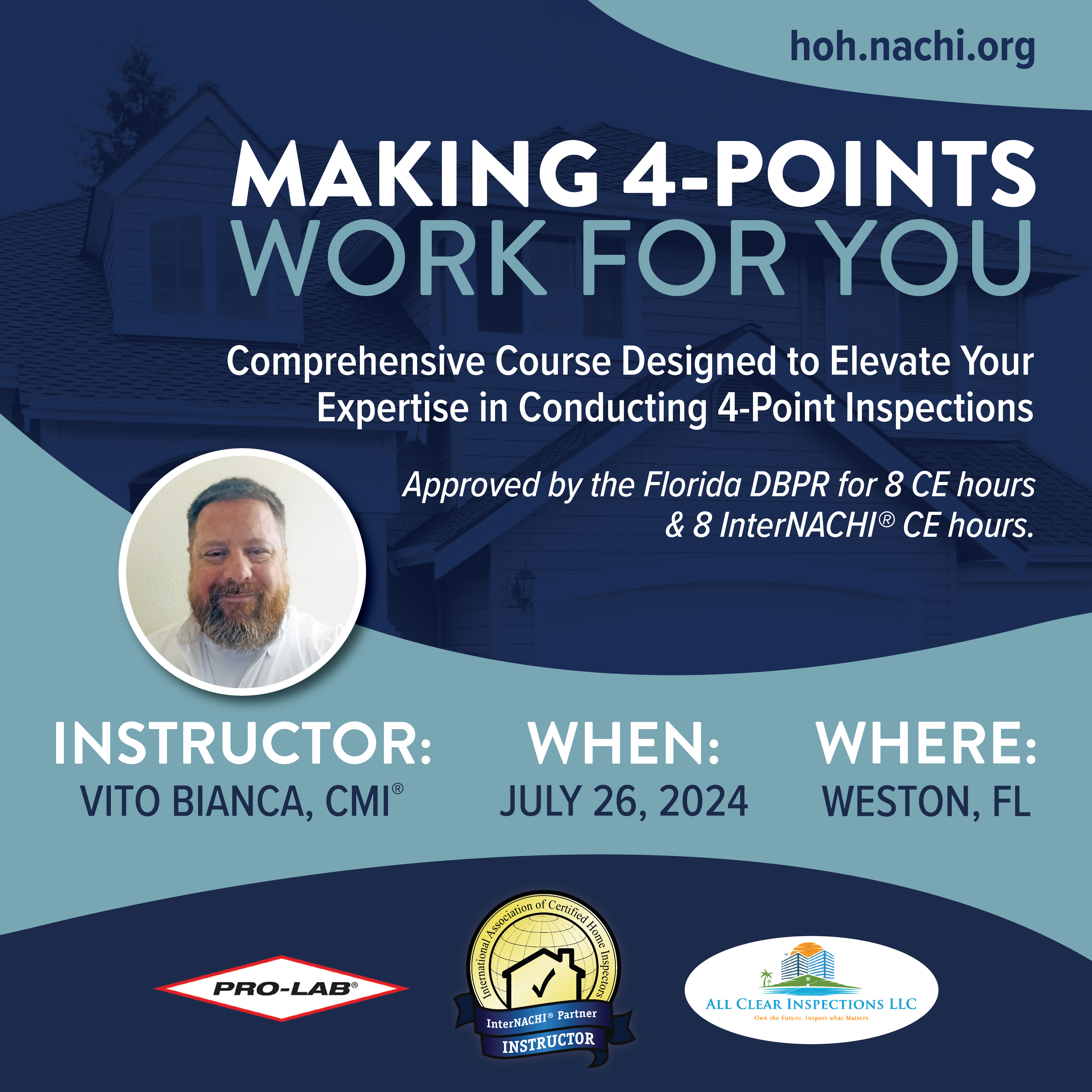Are Inspectors ‘Scary’? The Importance of Education, Partnership, and Responsibility in Real Estate Deals
by Vito Bianca, CMI

Understanding the True Role of Home Inspections
Many misunderstandings about the role of home inspections in real estate transactions persist. A home inspection is a critical evaluation intended to inform potential buyers of the condition of the property at the time of inspection. It is not an exhaustive prediction of future conditions but a snapshot that identifies visible issues. This reality underscores the importance of educating both real estate professionals and clients about what to realistically expect from home inspections.
Demystifying the Home Inspection Process
Home inspections are not about pointing out every minor defect but identifying significant issues that could influence property decisions. Inspectors are trained to spot systemic problems that could have substantial financial implications. However, their ability to detect issues is limited to what is visible and accessible at the time of the inspection. This limitation highlights why real estate agents need to guide their clients in understanding the scope and limitations of the inspection report.
The Value of Reading the Inspection Report Thoroughly
A common source of post-inspection complaints involves issues that were indeed noted in the report but perhaps not fully understood by the buyers or their agents. Comprehensive reading of the inspection report is crucial. It contains not only the summary of findings but detailed observations that could impact future decisions. This thorough understanding can prevent surprises, manage expectations, and ensure all parties are aware of the property’s condition.
Building Successful Partnerships
The relationship between real estate agents, inspectors, and clients is pivotal. By fostering strong partnerships and clear communication, agents can ensure that inspections provide valuable insights rather than becoming sources of contention. Agents play a crucial role in interpreting inspection findings, negotiating repairs, and helping manage client reactions and expectations.
Conclusion: Embracing Inspections as Opportunities
Rather than viewing inspections with apprehension, embracing them as opportunities for education and informed decision-making can transform the buying process. By fostering an understanding of the inspection process, real estate professionals can help demystify what may initially seem daunting, turning potential fears into empowerment through knowledge.
Four Points on the 4-Point: Forming a Reasonable, Defensible Approach to Defect Recognition
by Vito Bianca, CMI

In the complex world of real estate transactions, home inspections play a crucial role, yet they are often clouded by misunderstanding and variability. Inspectors are frequently caught between being overly cautious and minimizing issues to appease realtors, a dynamic that can ultimately compromise the integrity of inspections. This blog explores the challenges posed by the current lack of standardized practices in 4-Point inspections and introduces a robust solution that promises consistency, fairness, and clarity for all parties involved in a property transaction.
Illustrating the Problem in Four Points:
- Varying Standards: The absence of standardized guidelines leads to inconsistencies in inspection results, causing confusion among real estate agents, homeowners, and insurers.
- Subjective Interpretations: Inspectors often fall into extremes—either underreporting to stay in favor with realtors or overreporting out of fear of liability. This inconsistency can undermine trust in the inspection process.
- Unnecessary Costs: Overly cautious or uninformed reporting can lead to unnecessary repairs, increasing costs for homeowners and potentially delaying real estate transactions.
- Power to Insurance Carriers: The lack of clear standards often gives insurance carriers undue influence over the inspection outcomes, potentially leading to unfavorable terms for homeowners.
Providing the Solution:
To address these issues, I developed a set of clear, defensible standards and a decision-making logic tree. This system:
- Ensures consistency across all inspections.
- Clarifies what should be reported, distinguishing critical issues from minor ones.
- Empowers inspectors to make reasoned judgments backed by a structured approach.
- Is approved by regulatory bodies, lending it credibility and official backing.
Conclusion:
Implementing these standardized protocols in 4-Point inspections fundamentally shifts the landscape, enhancing the professionalism of inspectors and the trustworthiness of the inspection process. With these tools, inspectors can provide balanced, precise assessments that serve all parties fairly—ultimately supporting smoother transactions and fostering a more transparent real estate market.
